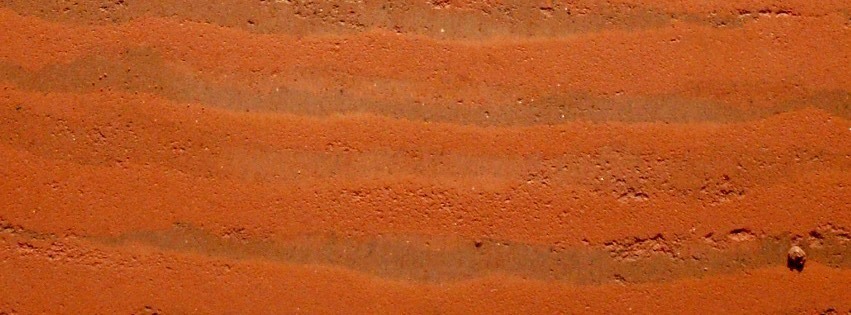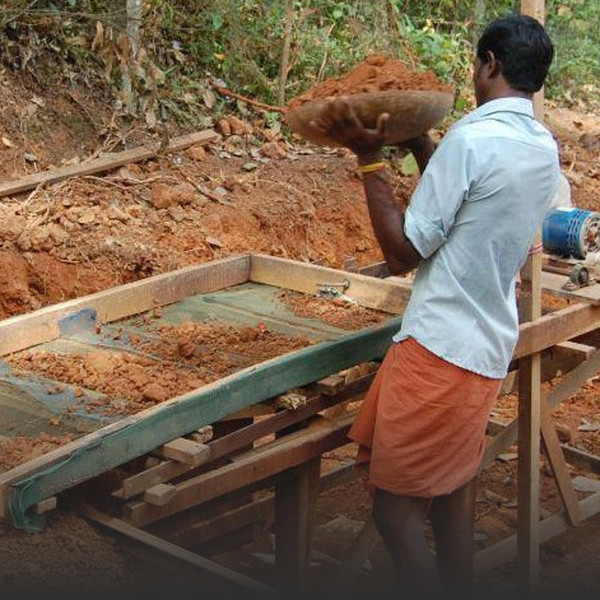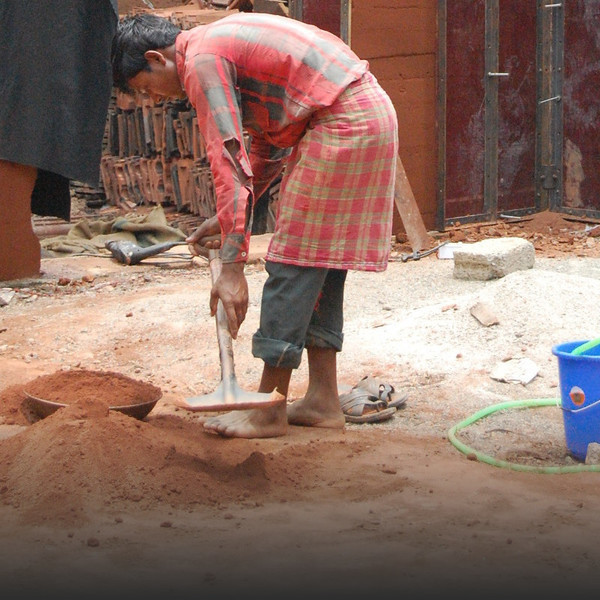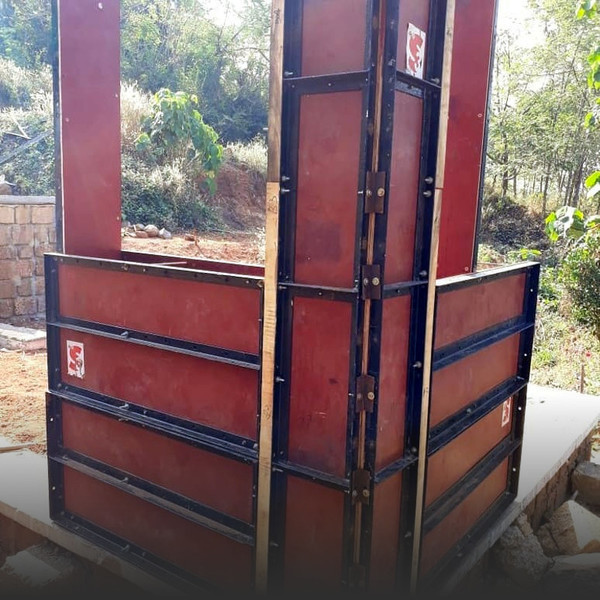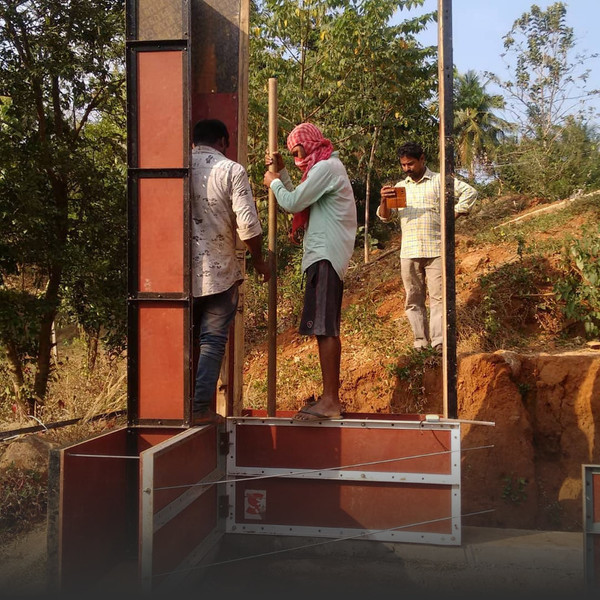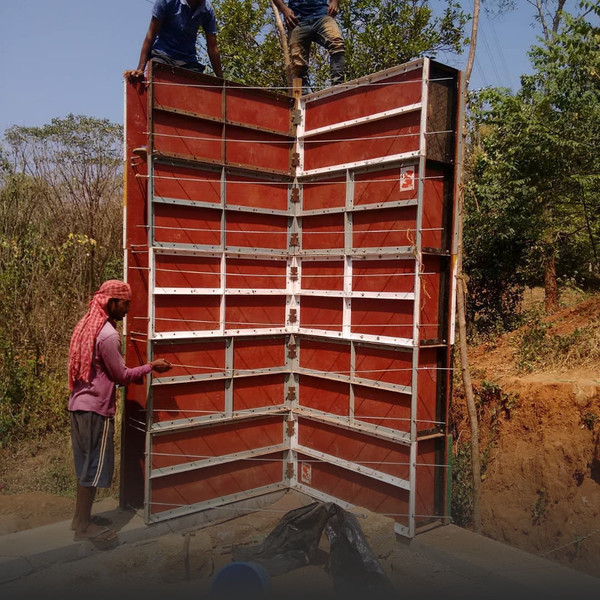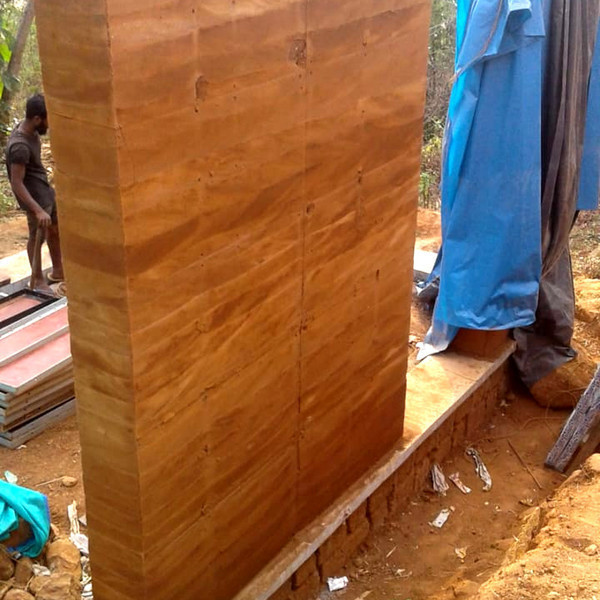Rammed Earth Construction

Introduction
Rammed Earth is compacted layers of soil within a form-work. It is one of the oldest building construction techniques and can be found in all the continents except Antarctica. Rammed Earth has seen a revival in recent years because of increase in demand for sustainable and natural construction.
Advantages
- Environment Suitable: Rammed Earth is totally biodegradable. All the raw material used goes back to nature in its original form thus making it one of the most environmentally suitable construction methods.
- Cost Effective: Since most of the raw material is available locally for free, the cost of construction works out to be very less.
- Low Embodied Energy:Most of the material is available locally thus reducing the need for transport. The compaction can be done manually and no heating process is used. Thus the embodied energy of the Rammed Earth walls is very less.
- Ease in construction: No machinery is required. All the work can be done manually.
- Insulating: Rammed Earth is highly compact and dense. Heat takes more time to travel through the walls and keep the interior cool.
Method
Construction of Rammed Earth involves compacting the mosit soil in a strong and sturdy form-work. Generally the form-work id made using Wooden or steel frame with wood or plywood or steel panels over it. Sufficient bracing and ties are given such that the two faces of the form-work are held together.
The proportions of sand, clay and silt in the soil need to be checked and appropriate stabilizer need to be added. Cow-dung, lime, cement, etc. can be added for increasing the binding property. Sand can be added for reducing the formation of cracks.
Different oxides can be used as colour pigments. Pebbles and stones of different size can be used to provide different texture to the walls.
The mixture of soil is poured in the form-work upto the depth of 15cms and it is compacted using the wooden rammer till the layer is reduced to 7.5 cms in depth. Then the next layer is poured and the process continues till desired height is achieved. The form-work is opened immediately after the wall is complete and cured with water.
Characteristics
Compressive strength of Rammed Earth is around 43kgs/sq.cms which is comparable with brick masonry and can be used to build buildings with load-bearing walls.
The process of construction is very simple and unskilled workers can be easily trained in the process.
Rammed Earth need to be protected from direct rain. While desiging the building care should be taken that rain water do not spash on the walls.
Conventional load bearing foundation can be used for Rammed Earth. Care should be taken that moisture do not rise up from the foundation.
Rammed Earth with exposed surface can control humidity of interior spaces effectively. The clay content and pores allow Rammed Earth to breathe more compared to conventional buildings.
The colour of exposed rammed eath walls will be same as the colour of soil used. Different coloured soil can be used in layer to achive various effects. Seashells, pebbles, stone can be added in certain layers to achieve various textures.
Photo Gallery
